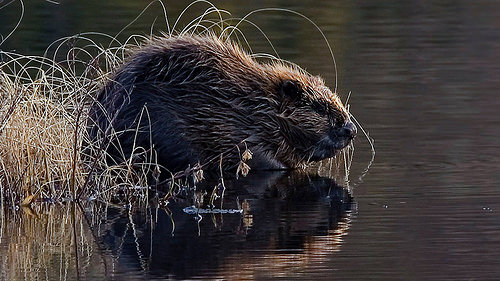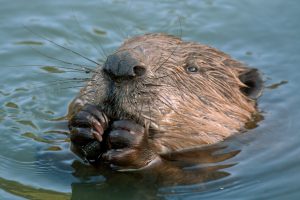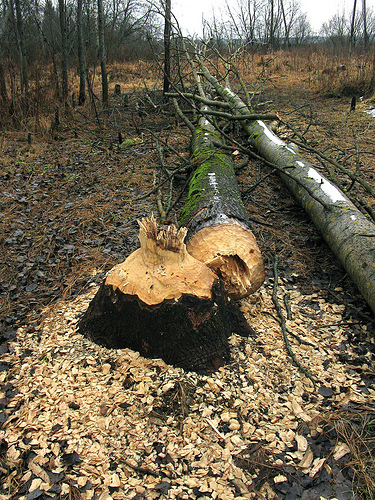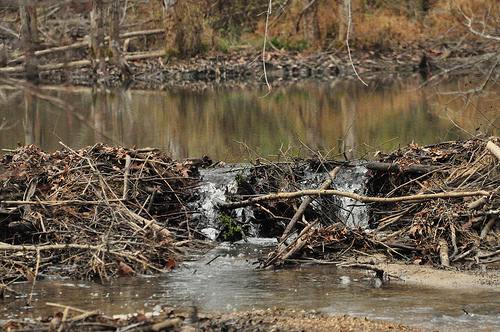We do too. But do you want to go out and see them?
Show me Wild ExperiencesKeep up to date with the hottest wildlife content on the web and save £10 on your first wildlife experience.
Sign Me Up!
The Eurasian beaver
Unknown to many, Eurasian beavers, Castor fiber, used to be present in the UK. In fact, they are native to Britain and the largest rodent in the country. So, why aren’t beavers still a part of UK wildife?
In the 16th century, beavers, which belong the rodent family, became extinct in the UK. Their disappearance was primarily due to humans who hunted them. One of the reasons why these charismatic animals were targeted was because of castoreum, a glandular oil. This oil, secreted by a special castor sac found near the anal glands and the base of the tail, was popular for its medicinal properties. It was used to treat certain ailments like headaches.
Beaver pelt was also a prized product in the European market. It was sought-after because the fur was of high quality. In addition, their meat was used as a substitute for fish.
Beaver Reintroduction Project in the UK
For 400 years, Scotland had no beavers. However, this changed when a beaver reintroduction into UK wildlife project was launched in 2009. This was the first ever mammal reintroduction project that was authorised in the UK. Known as the Scottish Beaver Trial, the project’s aim was to see if beavers can survive in the Scottish wild. It was also meant to determine if the presence of these animals can benefit nature and aid in conservation efforts.
The trial started in 2009 with the release of 11 beavers into Knapdale Forest. The reintroduction was done in three batches or three family groups. In 2010, two families were again introduced into Knapdale Forest. With this, the number of beaver released totalled 16. Prior to their release, these beavers from Norway were first quarantined in Scotland and Devon. Once in the wild, they were closely monitored by experts.

Eurasian Beaver
The project ran for five years; it formally concluded in May 2014. Based on the report, four of the adult pairs left in the wild were able to successfully breed. These pairs were able to reproduce 14 kits. Furthermore, these beavers were able to effect changes in the surrounding environment, building dams and canals.
Due to the positive results of the trial, the project was lauded by the government and various wildlife organisations. It also earned the distinction of being the first successful wild mammal reintroduction project in the UK. In 2016, the Scottish government officially gave beavers the native species status. With this distinction, these large rodents are now allowed to live in Scotland as protected species.
In 2017, three more beavers were released into Knapdale Forest. This is part of a three-year program that aims to improve the genetic diversity of beavers in this area. Part of the plan is to release up to 28 beavers during the course of the project.
Following the success of the Scottish beaver trial, a similar project has been implemented in England. Bavarian beavers discovered in the river Otter are now part of the trial. The project is set to end in 2020 and the results of the trial will decide the fate of these bucked-toothed creatures in England. Meanwhile, in Wales, there is also a plan to conduct a beaver reintroduction project.
What Are the Disadvantages of Reintroducing Beavers?
While the return of beavers in the UK got a lot of people excited, there are also those who are not too happy about it. Some farmers, landowners and anglers have expressed their opposition to the permanent reintroduction of these native rodents.
For some farmers, beavers are pests that pose threats to food production. Beaver activities such as felling trees and damming drainage channels can cause flooding. Consequently, destruction of arable land and crops can become inevitable. Scottish farmers have been echoing this sentiment since 2007 when several Eurasian beavers that escaped or were illegally released in 2002 started multiplying and settled in Tayside.

Trees felled by beavers
Meanwhile, fishermen are worried that the presence of beavers may have devastating effects on the fishing industry. Anglers fear that these animals can alter fish migration patterns. Furthermore, their damming activities could close off spawning areas for valuable fish species like salmon.
Aside from destroying farmlands and affecting the routines of fish, the return of these large rodents is also seen as a potential threat to trees and woodland. Moreover, some are worried that these animals will spread disease that can harm other species. For one, a rare tapeworm called Echinococcus is found in some beavers. This tapeworm, when passed on to humans, can cause terrible illnesses or even kill those infected with it.
What Are the Advantages of Reintroducing Beavers?
Yet, despite the possible negative impact of bringing back beavers for good, experts believe that these semiaquatic rodents can do more good than harm. Referred to as “ecosystem engineers”, beavers can help minimise flooding, according to some experts. The presence of beaver dams can slow down the flow of water from the uplands into the low ground.
Furthermore, these dams also help eliminate around 45% of pollutants like nitrogen and phosphates from rivers, creeks and streams. When washed into waterways, these harmful chemicals can trigger destructive algal booms. Apart from harmful chemicals, these structures also trap silt. With siltation minimised, reservoirs, lakes and other bodies of waters become less turbid and polluted. Suffice it to say, with these bucked-tooth animals around, water quality can be greatly improved.

Beaver dam
In addition, their habits provide viable habitats for a variety of plant and animal species. Moreover, the dams they create also benefits several animals like water voles, birds and otters, among others. Some water birds nest on beaver ponds. Meanwhile, dying trees and plants in the area attract insects which in turn become food for birds, frogs and other animals.
Lastly, the presence of these interesting creatures boosts ecotourism. In places where they’ve been reintroduced, significant increase in the number of tourists has been observed. In Scotland, Knapdale Forest gets numerous visitors who are hoping to get a glimpse of these big rodents. Currently, Knapdale has what’s called a Beaver Detective trail where visitors can learn about and watch beavers.
Clearly, the return of beavers in the UK is beneficial for the environment as well as the people and animals in these areas. It is also undeniable that the presence of these charismatic rodents has a negative impact as well. Yet, measures can be implemented to mitigate the possible problems that their existence may cause. As some experts say, it is all about striking a balance to ensure that all parties concerned, including farming and fishing businesses, benefit from the permanent return of the beavers in the UK.
—
The Eurasian beaver photo by NTNU, Faculty of Natural Sciences
Trees felled by beavers photo by carlfbagge
Beaver dam photo by Jeff Hudgins / Alabama